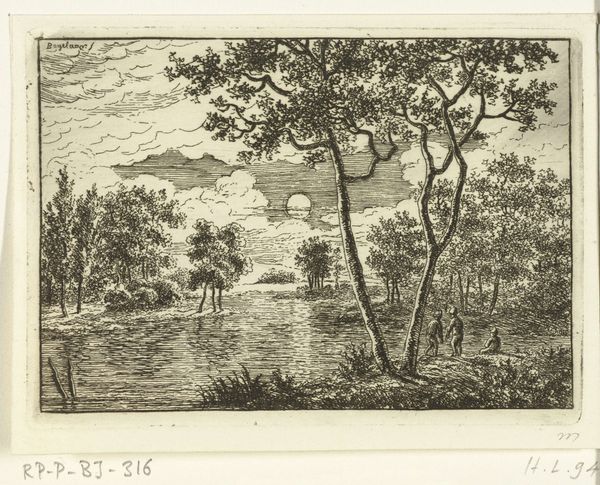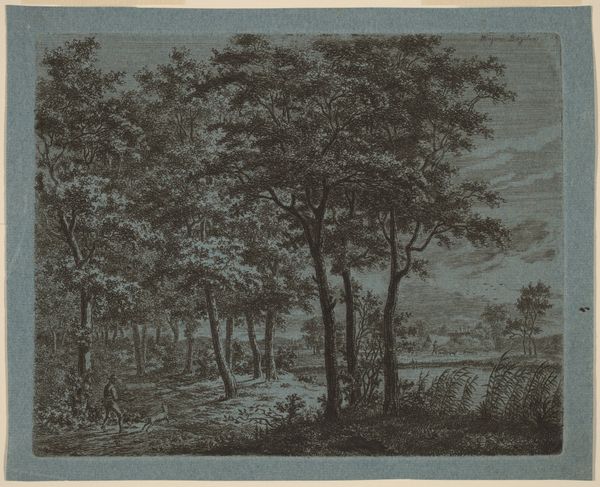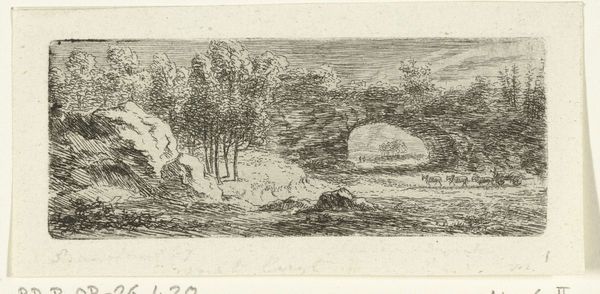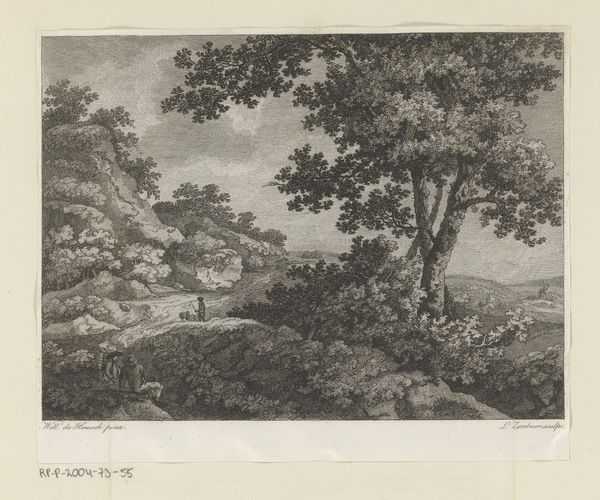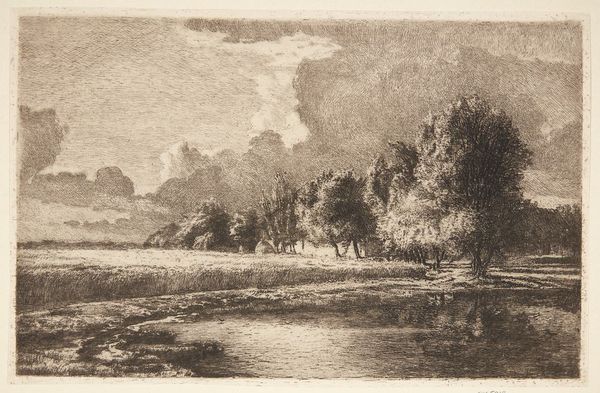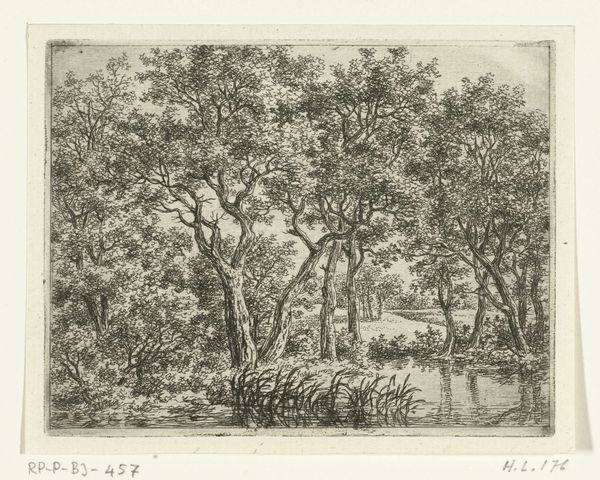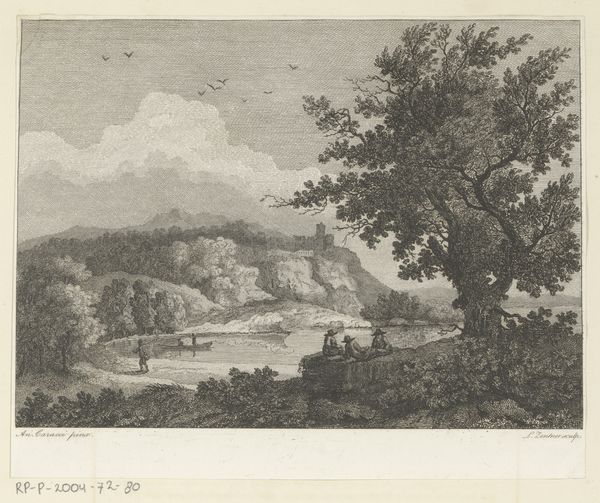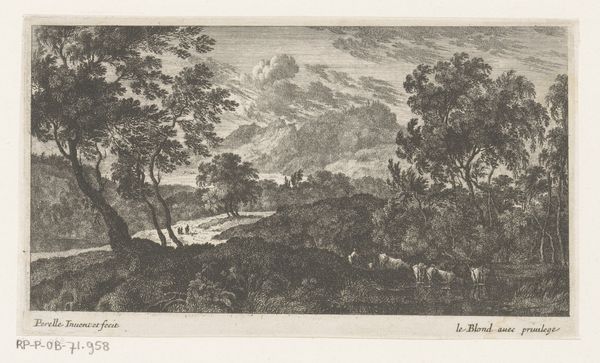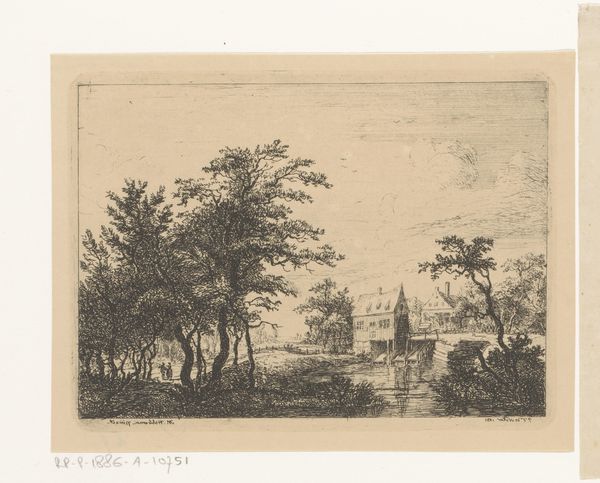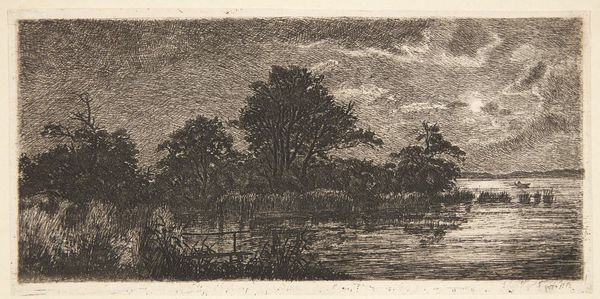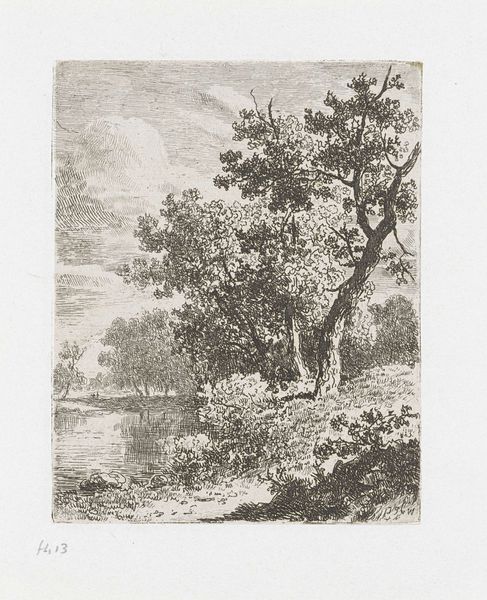
print, etching
# print
#
etching
#
landscape
#
romanticism
Dimensions: height 87 mm, width 118 mm
Copyright: Rijks Museum: Open Domain
Curator: Looking at this print, my first impression is of a kind of nocturnal tranquility, wouldn’t you say? The dense foliage frames a still river under a looming, yet gentle, moon. Editor: Indeed, it evokes quietude. What we have here is an etching titled "River View by Night with a Full Moon," made sometime between 1798 and 1837 by Ernst Willem Jan Bagelaar. I’m particularly interested in the material processes at work. Think of the artist meticulously etching into a metal plate, a laborious process transforming into an image of apparent ease. Curator: Absolutely, but beyond the technical, I am intrigued by what that scene represented socially. Nightscapes like these were not merely about pretty aesthetics. How did this imagery interact with gender and the romantic tradition of that period? One almost imagines the female character from an early novel waiting on a riverbank. Editor: I see what you mean, but it's vital to not strip away the means of production behind it! To ignore that element would almost strip away part of its power! The labor, the access to those specific materials, who could commission art at the time—all relevant sociopolitical elements to discuss when approaching art history. Curator: Point taken, there is the power of the materials itself to create mood and story, however. That luminous moon against the grainy texture contributes to the overwhelming tone. You can almost smell the water and wet bark through his use of depth! Editor: Precisely! How labor creates these images of night. Bagelaar uses etching to evoke nature’s own artistry, it is a powerful way to convey nature through human touch and production. It's about acknowledging the connection between material and cultural significance. Curator: Reflecting on the gender associations with Romanticism combined with the material practices provides more robust intersectionality in which to view works like "River View by Night with a Full Moon". Editor: Yes, analyzing labor, production, and social context makes an analysis so much deeper!
Comments
No comments
Be the first to comment and join the conversation on the ultimate creative platform.
